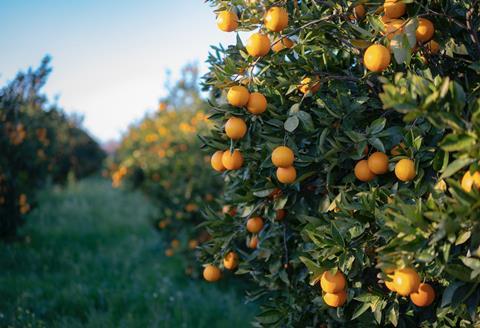Tail end of Australian citrus season delivers more promising results after challenging start
While not without its challenges, there have been signs of improvement for the Australian citrus industry over the 2023 season.

Comparing the season to date with that of 2022, Citrus Australia chief executive Nathan Hancock said fruit quality had improved in 2023 and the tail-end of the 2023 harvest has been particularly strong from a quality perspective.
“While the earlier fruit this season struggled a little with internal maturity – due to a cold and wet spring and mild summer – the mid- and late-season varieties are eating well. Quality has improved compared to the 2022 season,” he said.
Hancock said there has been a heavy ‘on’ crop of small fruit this season.
“Across most growing regions, the 2022 spring did not provide enough hot, dry weather, which affected fruit set and consequently size,” Hancock explained.
“Early season navels were particularly small given their naturally shorter growing season, combined with cool wet conditions. Fruit sizing in the mid-season did improve overall despite a heavy crop, while the late-season crop load is lighter.
“The Valencia crop is light this year, with small fruit sizes expected unless we see warm weather through spring and summer, which may add size.”
While growers in south-eastern Australia have faced some issues related to albedo breakdown for the second consecutive season, the impact is less severe than 12-months ago.
“Albedo breakdown has been present in crops this year, but we’ve seen vast improvements in the way this has been managed compared to the 2022 season, which was particularly severe,” Hancock said. “Overall, fruit cosmetics this season have been very good.”
Mandarin production, which has continued to expand across the country, has seen some mixed results. Markets took time to adjust to an increase in early fruit supply.
“For the first time we have seen some significant yield increases from areas such as Far North Queensland, as well as Emerald. This has meant that more Australian mandarins are available earlier in the season,” said Hancock.
Mandarin exports started earlier this season, due to the increased volumes of early fruit. This gave growers options other than the domestic market early in the year.
“The mandarin category continues to power ahead. We expect to see volumes continue to climb over coming seasons, making export market expansion an important part of the industry’s strategy going forward,” Hancock said.
Export outlook improves
As disruptions to global supply chains have improved, so too have trade conditions. China has been the number-one market for Australian citrus exports in 2023, in terms of volume shipped and trade value.
Looking to the future, Hancock said China would remain a cornerstone export market for the industry.
“We expect to see further growth in China over the next few years as diplomatic relations improve, and as China works through its post-pandemic economic recovery,” he said.
Japan has continued to show strong demand for Australian citrus, particularly for oranges, while Korea and Vietnam are emerging as important growth markets for the sector.
“There is an emerging market for lemons in Korea, with short supply form Chile and the tariff on Australian lemons declining each year,” Hancock said.
“This year, we have seen more than 10,000 tonnes of citrus exported to Korea for the first time ever. These shipments have been hard gains up against a range of technical barriers, but we are slowly breaking through those barriers.”
Australian exporters have been slow to capitalise on a new cooperative agreement with India, which entered into force this year.
Under the Australia-India Economic Cooperation and Trade Agreement, the tariff on Australian oranges and mandarins has dropped from 30 per cent to 15 per cent.
“To date, we haven’t seen any real improvement in export volumes to India,” said Hancock.
“Citrus Australia has reminded exporters to inform Indian importers of the tariff reduction quota and provide them with the relevant paperwork.”
Overall, Hancock said the industry was moving in a positive direction.
“At this stage, it’s fair to say it’s been a much better season than last year,” he said. “With good quality fruit for the tail-end of the season, we predict a reasonable improvement on last season’s outcome.”
Costs challenges
One of the largest challenges facing the Australian citrus sector has been rising production and transport costs which have significantly increased since the onset of the Covid-19 pandemic. The price of agricultural inputs skyrocketed in 2021/22, with little relief for growers this year.
“Higher costs include diesel, fertiliser, equipment and energy prices, while many growers and packers have found sourcing pallets difficult,” Hancock explained.
A harvest labour shortage has been resolved to some degree, although the cost of harvesting citrus crops remains substantially higher than pre-pandemic times.
“This is due to an increase in the minimum wage, along with changes to the Horticulture Award around piece rates. Worker shortages are also keeping the labour market price higher,” Hancock explained.



